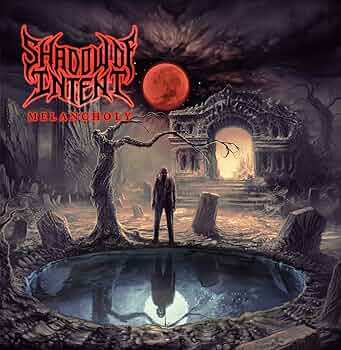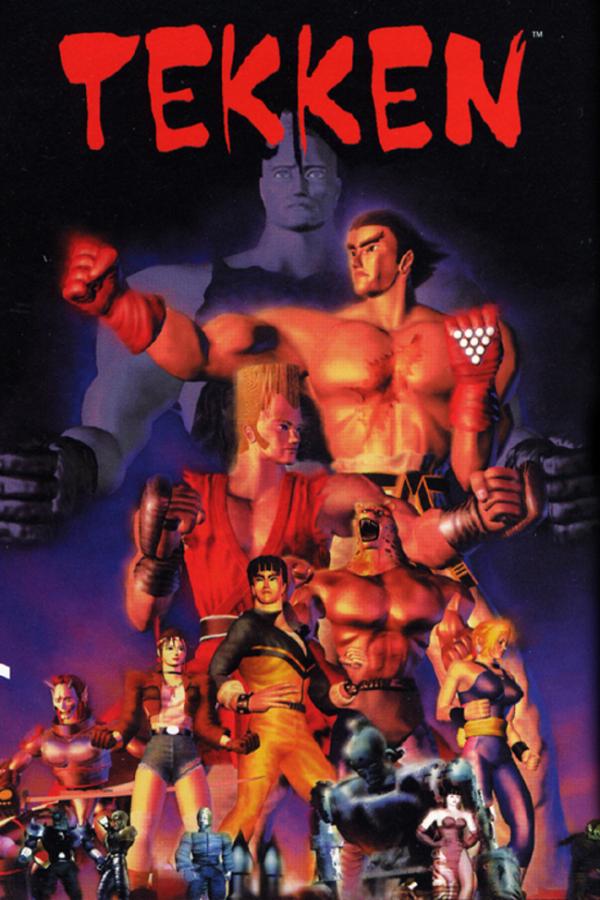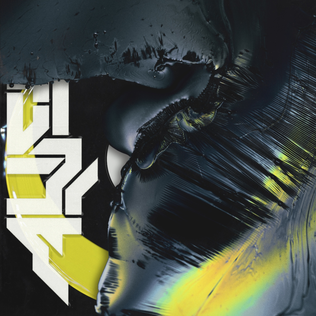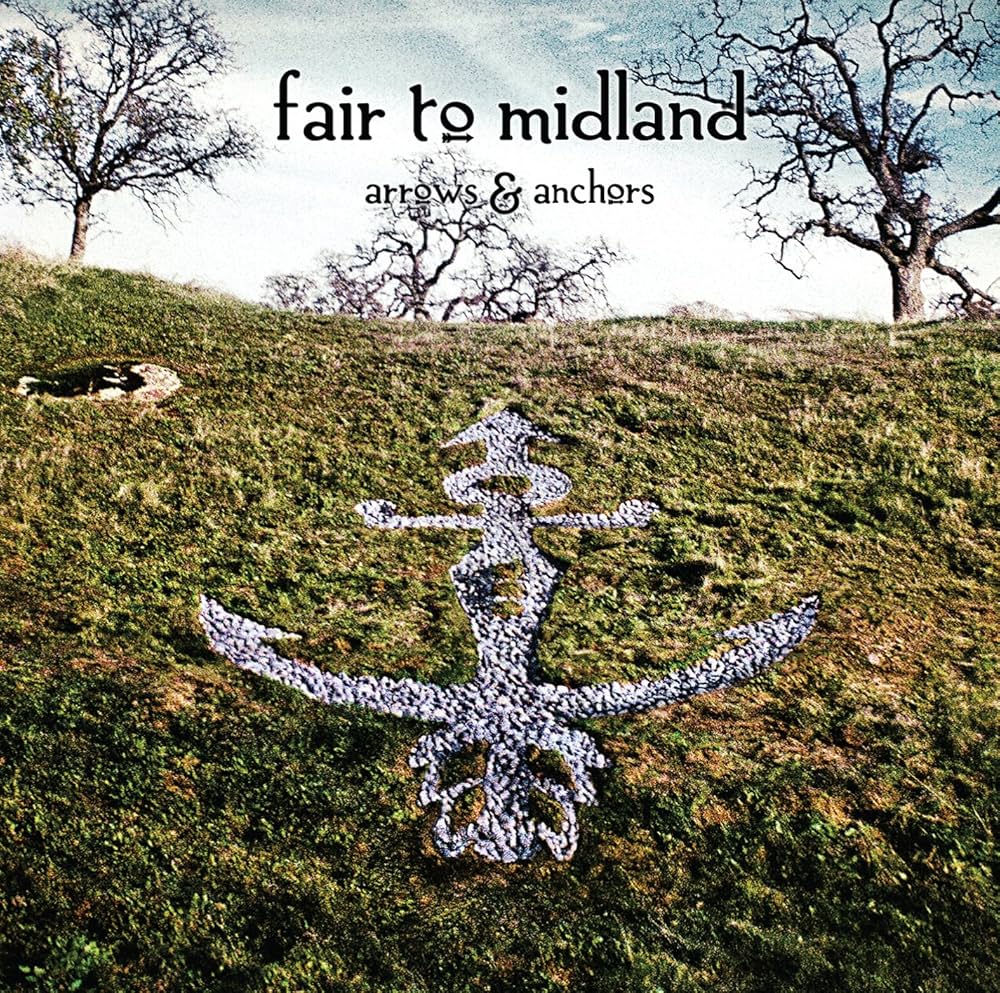After the success and reimagining of the deathcore genre with the release of Shadow of Intent’s Reclaimer. There was only a matter of time before they would need to follow it up, greater in atmosphere, grandeur, and overall musicianship. Precedingly, Shadow of Intent released Melancholy, an entrance into the odyssey of Halo’s The Gravemind, the animation of manipulation, commonly known as the antagonistic deity who controls the flood in Halo 2. For the listener, knowing the prospect of Melancholy is important to acknowledge each aspect through Shadow of Intent’s craftsmanship and overall music.
“Melancholy”: 4
Listeners begin their journey with the title track “Melancholy.” The track presents a new approach to Chris Wiseman’s and Ben Duerr’s progressive/symphonic deathcore foundation with a blackened feel. However, in comparison to other bands who have adopted the black metal posture, Shadow of Intent’s work with Fleshgod Apocalypse’s Francesco Ferrini, who composed most of the side of each track. By doing this, they created a smoother transition from their previous works, while also creating a granular opening and establishing the substratum that listeners will inherit through each track.
“Gravesinger”: 5
The following track continues with the same grandeur, but without as prominent riffs in their place, with Andrew Monias’ groove-oriented basswork. There is a heavier application of metalcore choruses, even with the inclusion of emotional standings. Probably one of my favorite aspects of this track is Bryce Butler’s sporadic drum style, kind of combining modern deathcore elements with mid-2010s progressive metal. “Gravesinger” is a description of the Gravemind and its power over the universe.
“Barren and Breathless Macrosom” (Feat. Trevor Strnad): 4
Surprisingly enough, the listener will step out of Shadow of Intent’s unique feeling progressive methodology for traditionalistic deathcore, at times, through the track, it even delves into death metal itself. Even though I don’t subscribe to either, with the quick dipping in out of their usual style and the absolutely quintessential mastery of Trevor Strnad of Black Dahlia, you can’t really complain. The track is outlined by a restrained band due to its technicality, now able to burst into an all-out assault without any intentionality for the music itself. Just pure chaos. Shadow of Intent embellishes the song with a presentation of how humankind has a natural sense of destruction and the ability for the gravemind to feed into those embedded behaviours.
“Underneath a Sullen Moon”: 4
With the new track, they step back to pursue a broader praxis of their direction into the black metal side of the album. In spite of that, I’m not sure if it’s necessarily an instrumentally led hypothesis of mine or if it’s just Ben Duerr’s vocals. Listeners may get confused because there are hints of said standards with a few riffs from Chris Wiseman that employ the tremolo picking technique, and the more Golem-like highs vocally. Whether or not this track has a fairly unique identity, which reflects the mixed-bag hierarchy of the song.
“Oudenphobia”: 5
Chris Wiseman has always differentiated his work with Shadow of Intent from his main project, Currents. A lot of it comes down to his writing on guitar. Most of Currents is traditional Metalcore, with a hint of pop-punk. Due to this, a lot of the riffwork is mainly rhythmic, and his best train impressions, with his chugs. As opposed to Shadow of Intent, which focuses on more melodic leads. “Oudenphobia” is a sort of culmination of both bands, but there is still 70% the normal foundation of Shadow of Intent. As reflected in the title, the term Oudenphobia is the fear of nightiness or oblivion. Subsequently, it is an explanation or an origin of the Gravemind, which is the manifestation of oblivion.
“ Embracing Nocturnal Damnation”: 3
Paradoxically, this is one of the only tracks to be weakened due to one thing. Its repetitive nature never rubbed off on me in comparison to the other tracks, at least ones that are similar in Shadow of Intent’s songwriting approach. It just felt like the leftover demos of the earlier tracks with fewer hooks. Another big contention I have against this track is that the story, “Embracing Nocturnal Damnation,” is a seemingly lazy construct of Spiritual Disillusionment. The vocabulary feels more like a traditional word-vomit death metal song than their previous work, being more “real.” Between this and it just being a lazy point in the character study of the Gravemind, I have to rate it low.
“Dirge Of The Void”: 4
Luckily, Shadow of Intent rebounded with “Dirge Of The Void” by working in thrasher riffs. We return to the presentation of Bryce Butler being prominent in the mix. It is simplistic for the band, but they show off a little bit of “Barren and Breathless Macrocosm” just in a controlled environment. Fascinatingly enough, “Dirge Of The Void” expounds on the aftermath of the Gravemind’s destruction, and the song records the struggles of one of the victims in the underworld.
“Chthonic Odyssey”: 4
Shadow Of Intent brings back the death metal-driven tonalities, with hints of black metal throughout the choruses. It is a perfect balance of “Oudenphobia” more melodic sensibilities, even at times edging on the side of metalcore, while also tipping the scales on the more punchy and thrash-oriented riffage like “Dirge Of The Void.”
“Dreaded Mystic Abyss”: 5
Wow. Every album they have released is an experimental journey, showing the band’s lengthier side of their progressive elements. “Dreaded Mystic Abyss” is a 10-minute instrumental showing off the work of all bandmates, during which Ben Duerr more than likely enjoys a throat-soothing tea. I’m not sure if it’s true, but let me have my delusions. The track features the melodic leads of Chris Wiseman and the crisp Bass tones of Bryce Butler. All of this is coming to zenith because of the sound engineering of Cryptopsy’s very own Christian Donaldson. The primary thesis of this album is evident in this piece. For instance, they present a thorough tripartite, melodic catchiness for those who might not be familiar with heavy music, the piece(s) being heavy enough for live shows and metalheads alike, and finally, the technical prowess to make musical composers shed a tear. This does all that and some more, without vocals and in 10-minute tracks without losing any momentum.
“Malediction”:4
The record finally combines the instrumentation and principles of “Gravesinger” and “Melancholy,” creating a grand resolution to this character study of the Gravemind. The constant buildup and sporadic bass are just a cherry on top of this framework. The same protagonist from the previous witnesses the curse of the Gravemind’s afterlife, and the loneliness. All coming full circle to a denouement of melancholy.
Overall, the album is a masterpiece amongst the somewhat creatively dying deathcore genre. It does not show the heavier chops of Chris Wiseman, but what technicality can be held in a genre commonly the opposite.








